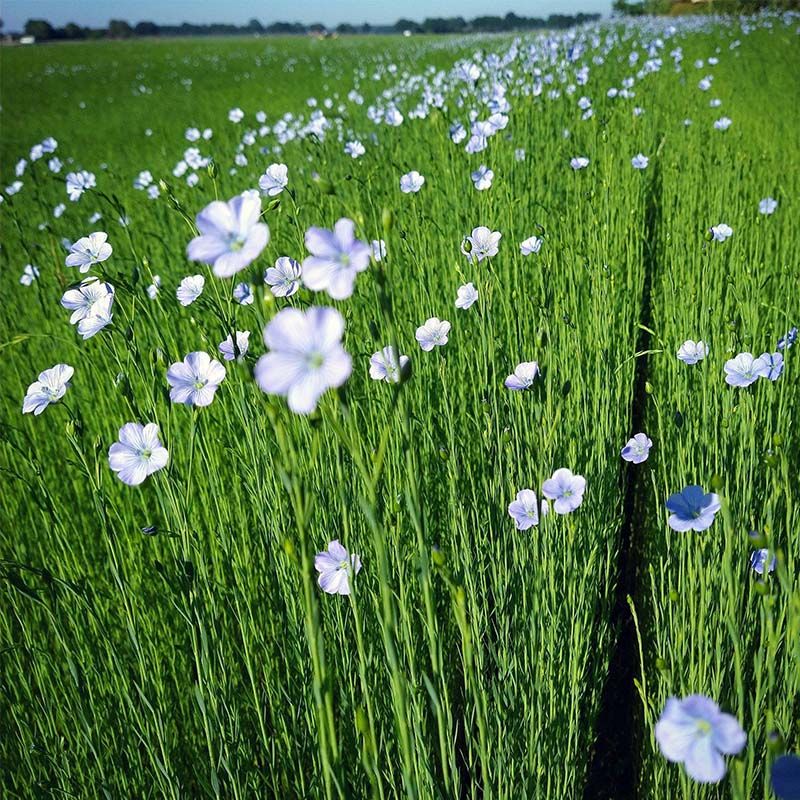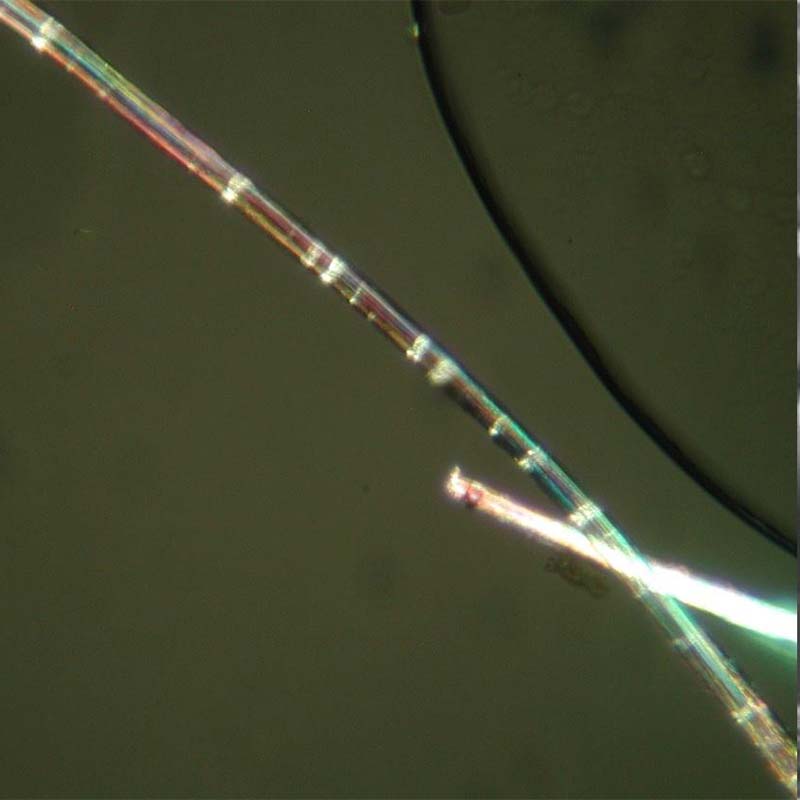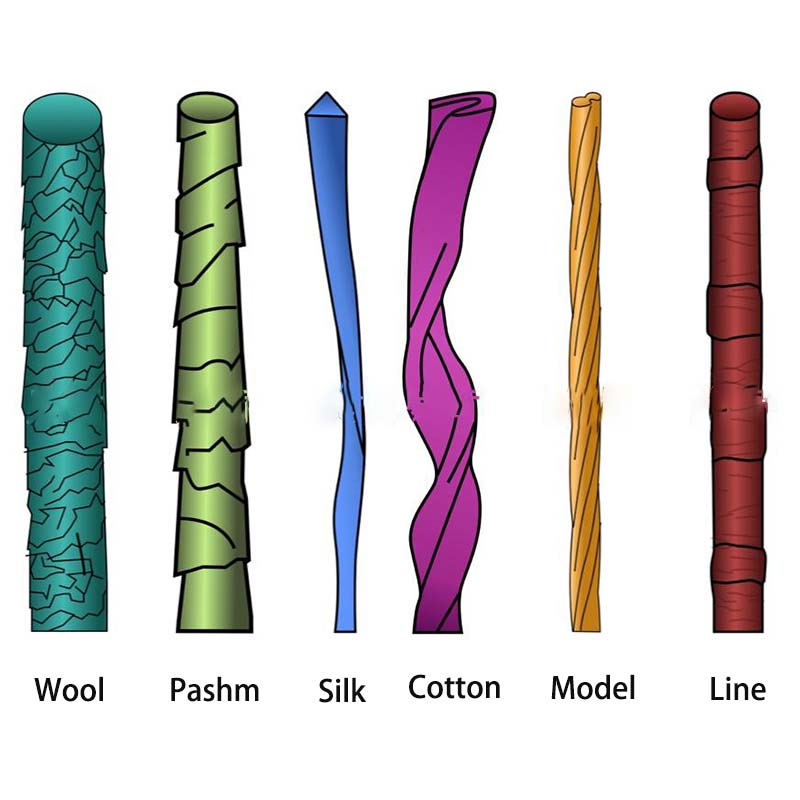1.Why does linen feel cool?
Linen is characterized by cool touch, can reduce the amount of sweating, hot days wear pure cotton, sweat is 1.5 times that of linen. If you have linen around you and wrap it in your palm, you will find that the linen in your hand is always cool and does not get hot. Try a cotton one. It'll get hot after a while.
Linen is cool to wear in summer because it is the most hygroscopic and hygroscopic natural fiber.

Flax is a kind of herb, flax as many as hundreds of species, the textile industry is the use of fiber flax, the growth of the subcold climate, the rod diameter is thin planting dense, the height is usually between 1~1.2 meters, the rod diameter is usually between 1~2cm.
Flax in the 30-40 day growth cycle, every 1kg of flax growth, to provide 470kg of water, so flax naturally has a strong moisture absorption and water transport capacity.

Under the electron microscope, flax fiber looks like hollow bamboo, this hollow structure of flax fiber, has a large specific surface area, so that flax fiber has strong hygroscopic and hygroscopic properties. Flax can absorb up to 20 times its own weight of water, flax can absorb 20% of its own weight of water, and still maintain a dry feeling.
It is because of the strong hygroscopic and hygroscopic properties of linen that wearing linen clothes or sleeping linen sheets in summer produces capillary phenomenon when in contact with the skin, and human sweat and water vapor are rapidly absorbed and conducted by linen fibers, making the human body feel the temperature drop and the skin stay dry. That's why flax feels cool.
2.Why does linen have no static electricity?
Flax, hemp, flax and other hemp fibers have almost no static electricity. The common moisture regain of flax (which can be simply understood as the water content in flax fibers) is 12%, which is relatively high in natural plant fibers. Coupled with the hollow structure of flax, it has strong hygroscopic property, so the positive and negative charge balance of flax fiber does not produce static electricity.
The advantage of not producing static electricity is that linen clothes will not be close because of static electricity, and it is not easy to absorb dust and other microorganisms in daily life. Therefore, in addition to clothing, linen is an excellent home textile fabric, whether as bedding, curtains, or sofa covers, can be kept clean for longer and reduce the frequency of cleaning. In ordinary fabrics, the main need to incorporate 10% linen, which can effectively inhibit static electricity.
3.Why is linen good for UV protection?
(1)Flax fiber, containing UV-absorbing hemicellulose.
(2)The surface of flax fiber has a natural luster and can reflect some light.
The textile industry needs cellulose in plant fibers. Flax is different from cotton, which is a fruit and its main component is cellulose, with few impurities.
Flax fiber, on the other hand, is the bast fiber from the flax stem. Through a series of processing, flax fiber can be obtained is a small part. A hectare (100 acres) of land can produce 6,000 kilograms of flax raw materials, after beating hemp - comb, can produce 500 kilograms into short flax, 300 kilograms into short flax, flax long fiber 600 kilograms.
In flax fiber, the cellulose content is only 70 to 80%, and the remaining gum (linolenin symbiosis) content is:
(1)Hemicellulose: 8%~11%
(2) Lignin: 0.8%~7%
(3) Lipid wax: 2%~4%
(4) Pectin: 0.4%~4.5%
(5) Nitrogenous substances: 0.4%~0.7%
(6) Ash content: 0.5%~ 3%
In fact, many of the characteristics of flax fiber, such as rough feel, UV protection, hair loss, are due to these colloid.
Flax fiber, containing 8%~11% hemicellulose, these hemicellulose components are extremely complex, is composed of xylose, mannose, galactose, arabinose, rhamnoose and other copolymers, now the process can not be completely removed.However, it is also the presence of hemicellulose that gives flax excellent UV protection.
4.Why do some flax feel rough, a bit prickly, and not easy to dye?
Because flax contains lignin. Lignin is one of the components of the cell wall of flax, mainly exists in the xylem and phloem tissues of flax stem, and plays a supporting role in flax. The ability to withstand certain mechanical effects.
The lignin in flax fiber can not be completely removed after processing, the lignin content is about 2.5% ~ 5% after degum, and the lignin content is about 2.88% after processing into raw flax yarn, and the minimum of high-grade fine flax can be controlled within 1%.
Flax lignin, hemicellulose, in short, in addition to all the components of cellulose, collectively referred to as gum. Flax fibers, in addition to lignin gum, also affect the feel of flax.
It is precisely because of the existence of lignin and gum, so the feel of flax is rough, brittle, relatively high, poor elasticity, and itching.
It is also because of the presence of gum, flax fiber crystallinity is high, the molecular arrangement is tight and stable, can not be destroyed by dyeing additives, so flax fiber is not easy to dye, and the color fastness after dyeing is relatively poor. That's why a lot of linens are made of linen.
If you want to make linen dyeing better, on the one hand is to do a good degumming treatment, after two degumming fine linen dyeing will be better. Then the use of concentrated caustic soda, destroy the crystallization of flax, natural flax crystallinity 70%, after concentrated alkali treatment reduced to 50~60%, can also improve the dyeing effect of flax. In short, if you encounter brightly colored linen clothes, it must be high-end goods, higher quality, and the price will not be cheap.
5.Why does linen wrinkle easily?
(1) The fiber with good resilience is not easy to deform and wrinkle. Animal fibers, such as cotton, Modal and wool, are curly fiber structures and have a certain resilience to deformation.
(2) Knitted fabrics have a relatively large gap structure, and the resilience of deformation is relatively strong.

But this thing flax, the "hollow bamboo" steel straight male structure, also has lignin and other colloid, so flax fiber is not elastic, it has no deformation resilience. Linen fabric is also mainly woven, and the fabric structure does not bring back elasticity. The folding of flax, therefore, is equivalent to breaking a small stick, which cannot be restored.

Since linen has wrinkles, in fact, when wearing linen clothes, you can not take the effect of cotton, wool, silk as a reference.
It should be designed and cut with the characteristics of linen, in the European and American costume films, the clothing that appears is mostly based on linen, you can pay attention to your favorite style when you see the film, many linen clothes are still very good-looking.

Now there are also some high-end fine linen, after two degumming, lignin and gum control in a small range, the linen fiber treatment into close to the characteristics of cotton fiber, and then cotton, mold and other blended into knitted fabrics, this high-end linen fabric basically solves the wrinkling problem of linen, but this kind of products are still very few, the price is more expensive than cashmere and silk, the current is not mainstream, It is expected to be popularized in the future.
6.Why do some flax pilling and shedding easily?
Because flax fibers are too short. Fabric fiber, only thin and long, can spin a fine high-count yarn line, high-count yarn less hair, not easy to pilling.
The traditional flax fiber uses the wet spinning method, the flax fiber is cut into a length of about 20mm, while cotton, wool, velvet and so on are generally about 30mm, compared with flax fiber is too short, it is easy to hair. There is also 16mm short fiber in flax fiber, and pilling is of course more serious.
With the progress of the process, there is now also cotton hemp fiber (linseed cotton), as well as fine flax. The second degumming process of flax fiber is processed into 30~40mm fiber, which is close to the characteristics of cotton, wool and cashmere, and can be blended and knitted. So there's a huge difference in quality and a huge difference in price between flax and flax.
7.Does flaxseed oil come from flax?
Not the same kind of flax, flax is an herb, there are hundreds of species of flax, divided by use:
(1)Textile fiber flax: growing in the subcold zone
(2) Flax for oil: grows in the tropics
(3) Oil and fiber flax: growing in temperate and subtropical zones
In our country, the fiber flax is called "flax", and the oil with oil and fiber is called "flax", flax seed can make flax oil, also known as flax seed oil. Oil flax in the world is the world's second largest flax producing area, the output is second only to Canada, flax mainly grows in northwest China, with the highest output in Inner Mongolia.
Fiber linen and oil linen are both raw materials for weaving linen, making linen clothes and linen bedding that we need. Among them, the fiber flax planted in the subfrigid region, the yield and quality are better, the main producing areas are: France, the Netherlands, Belgium, and China's Heilongjiang region, the production of textile flax in these areas, accounting for about 10% of the total global flax production. Therefore, the flax grown in the world is still mainly oil-producing, and eating is more important than wearing.
Post time: Sep-26-2024






